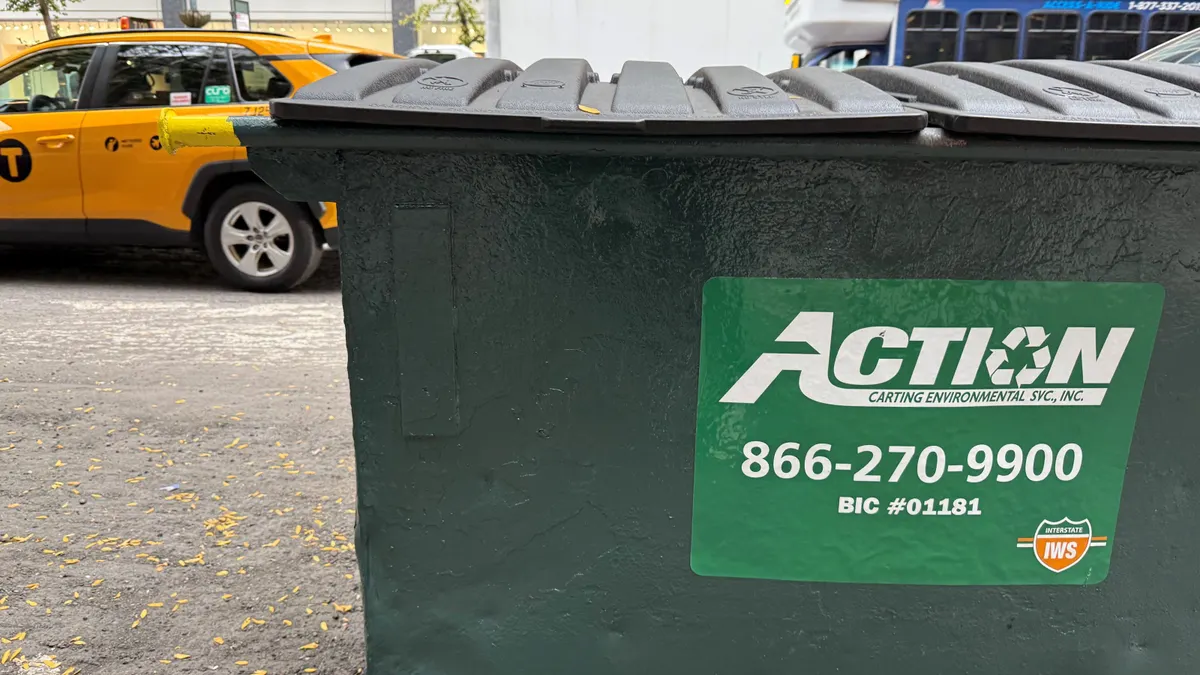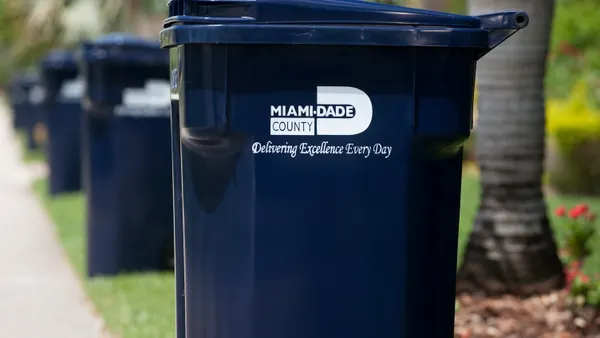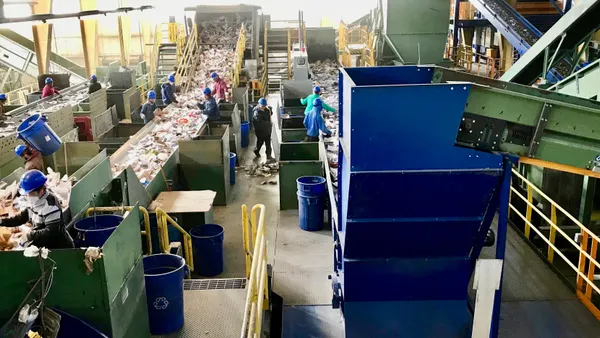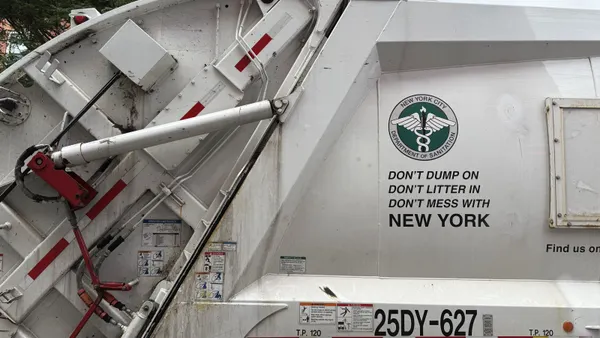Dive Brief:
- A new Solid Waste Association of North America (SWANA) Applied Research Foundation (ARF) report concludes government food waste diversion goals, from national down to local municipalities, can only be achieved with substantially more food waste processing capacity. The report specifically determined a good volume of food waste can be diverted through composting facilities, and through anaerobic digestion (AD) and co-digestion at wastewater treatment facilities.
- Selection and implementation of food waste diversion programs should be done locally, the authors concluded. Several states, including Massachusetts and Connecticut, base their diversion requirements on the capacity that their generators can tap into within a specific distance.
- Authors of ARF findings call on the industry to leverage a life cycle analysis, which assesses for economic and environmental costs as well as benefits of given food waste diversion practices, based on needs in their area, system capabilities, and data.
Dive Insight:
The EPA is mandating 50% food waste diversion by 2030, which means governments and industry have a lot of work ahead of them, and with no universal best practice that can be applied across municipalities. Adding more complexity is a lack of infrastructure; BioCycle reported in 2014 that while food scrap recovery is slowly increasing, barely over 180 communities nationwide had residential food scrap collection programs; and of 4,914 composting operations, about 71% compost only yard trimmings.
The presence of large-scale anaerobic digesters is spotty throughout the country too, and the technology is expensive—sometimes upward of $100 million.
However as the EPA's goal creeps up, many cities are stepping up food diversion through these methods, including New York City which now requires certain businesses to compost—a move expected to keep 50,000 tons of waste out the landfill every year. Some other municipalities, such as Wake County, NC, are looking at life cycle tools to determine how to get on top of its mounting food waste problem. Such efforts are crucial, believes David Biderman, executive director and CEO of SWANA.
"We believe that Americans need to rethink how food is handled, before it is considered waste, to divert it into programs to feed people, and to find other productive uses for food as food," he said in a press statement. "Once it becomes waste, however, municipal decision-makers, working with their processing partners, need to determine how to best manage the material."








